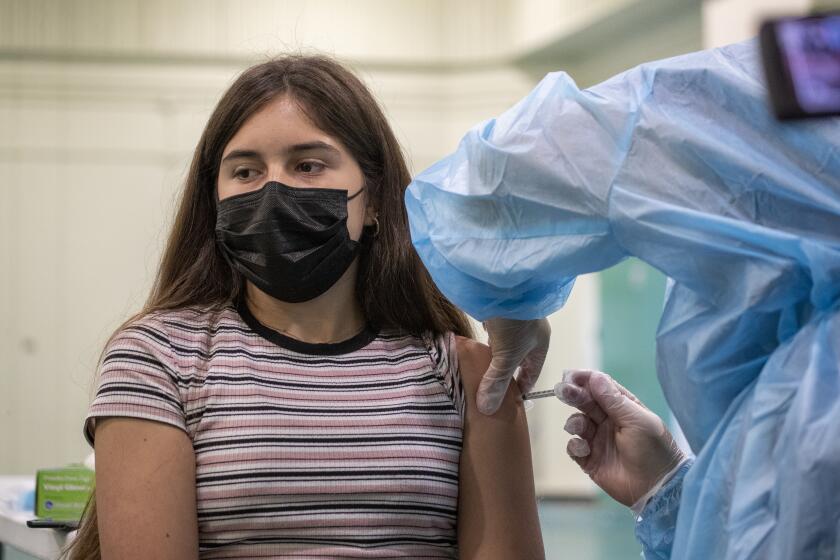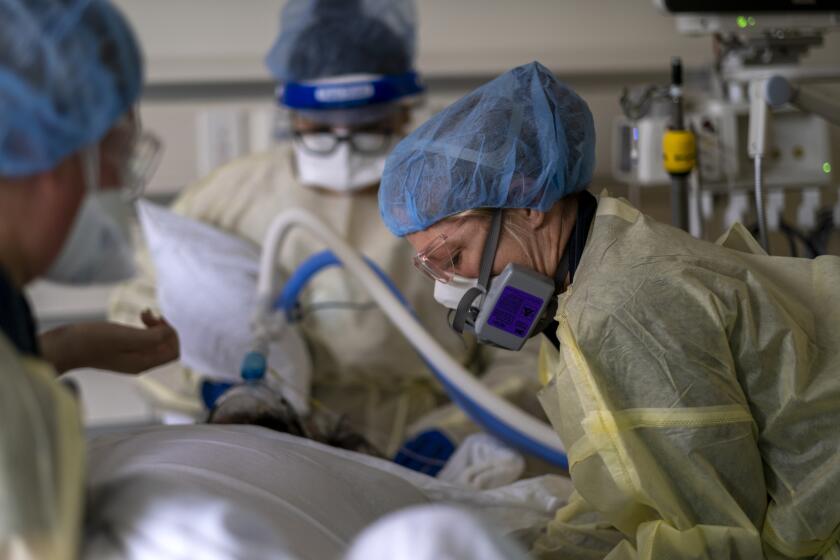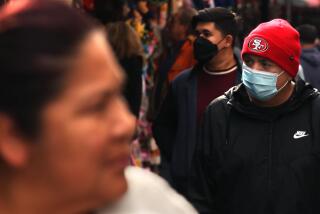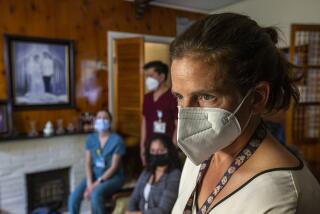California coronavirus cases dropping, CDC says
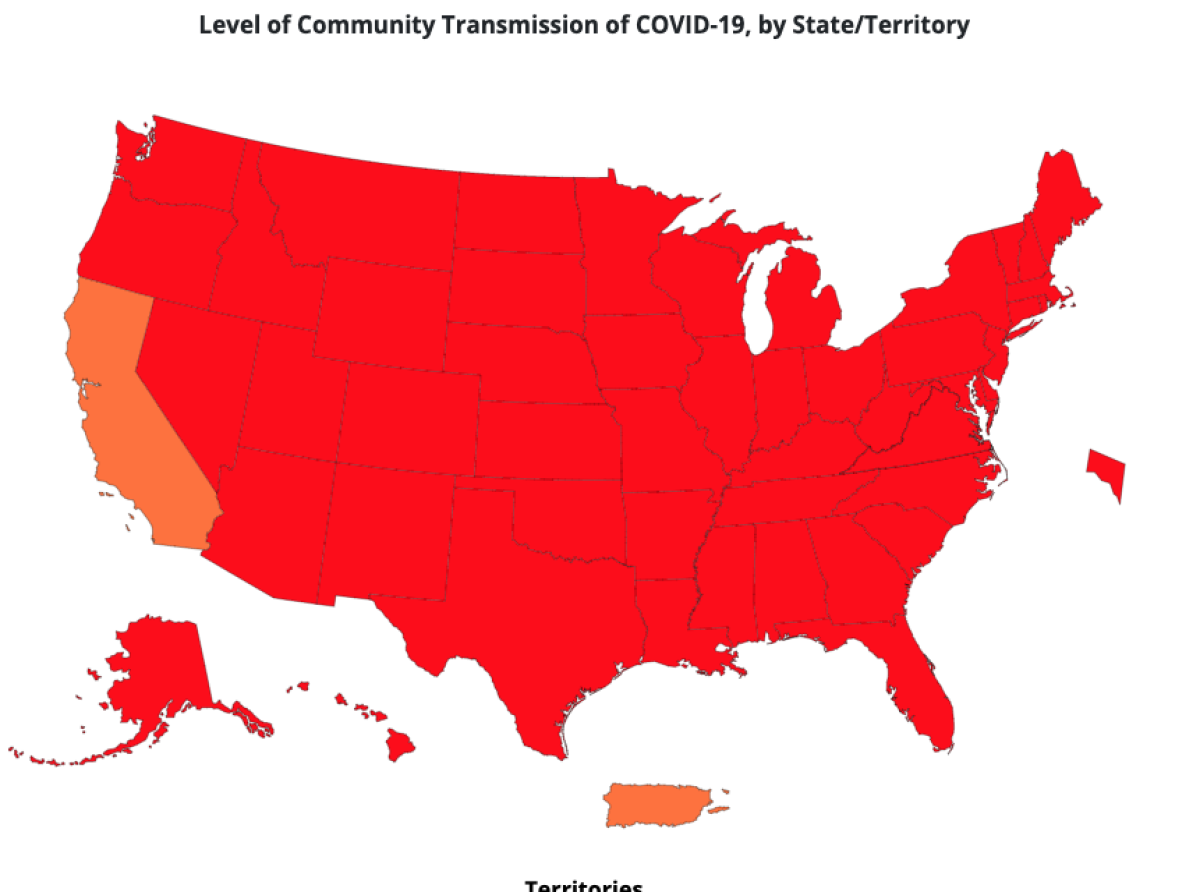
- Share via
California’s coronavirus transmission rates are dropping, a hopeful sign amid a summer surge fueled by the Delta variant, according to new data from the U.S. Centers for Disease Control and Prevention.
The state’s coronavirus transmission level has fallen from “high” to “substantial,” the second-highest tier as defined by the CDC.
As of Tuesday night, California is the only state that has fallen into this category, as has Puerto Rico. The CDC’s scale evaluating coronavirus transmission levels categorizes states as being in one of four tiers: the worst — high — is color-coded as red; followed by substantial (orange), moderate (yellow) and low (blue).
California is “the only large state to improve from red to orange COVID-19 community levels of transmission,” state epidemiologist Dr. Erica Pan said in a tweet Monday night. She credited relatively high vaccination rates, as well as indoor masking practices, in helping drive down new coronavirus infections.
Mask orders are in place in counties where a majority of Californians live, but there is no statewide order requiring indoor mask use in public settings.
California entered the second-highest tier of coronavirus transmission on Monday night, a tier it shared with just two other states, Connecticut and Vermont, as well as the District of Columbia and Puerto Rico. By Tuesday night, Connecticut, Vermont and the District of Columbia had fallen back into the worst tier.
It was not immediately clear whether data-processing delays were a factor in California’s lower rate of community transmission. Los Angeles County did not report any cases Saturday or Sunday because of a planned system upgrade.
As a result, it likely will take a couple of days to determine whether the change in California’s status is the result of a blip in data or represents a true change in conditions. The CDC updates its tier assignments for each state every evening Monday through Saturday.
Compared with some other large states, California is seeing some positive signs in fighting the latest coronavirus surge fueled by the Delta variant.
Nonetheless, the trend in new weekly coronavirus cases headed into last weekend suggests a notable decline in recent weeks, which could bring eventual relief to areas like the Central Valley and rural Northern California, where many hospitals are still overwhelmed by COVID-19 patients.
As of Friday night, California reported a 27% decline in weekly cases over the last two weeks, from an average of 13,400 cases a day for the seven-day period that ended Aug. 27 to about 9,800 cases a day for the week that ended Friday, according to a Los Angeles Times analysis of data provided by the state Department of Public Health.
Over the same period, the San Francisco Bay Area reported a decline in weekly cases of 36%; Southern California, 28%; the Greater Sacramento area, 27%; the San Joaquin Valley, 18%; and rural Northern California, 15%.
The nation as a whole is also seeing new weekly coronavirus cases begin to fall. About 118,000 new coronavirus cases a day were reported across the U.S. over the seven-day period that ended Sunday; the previous week’s average was about 152,000 cases a day.
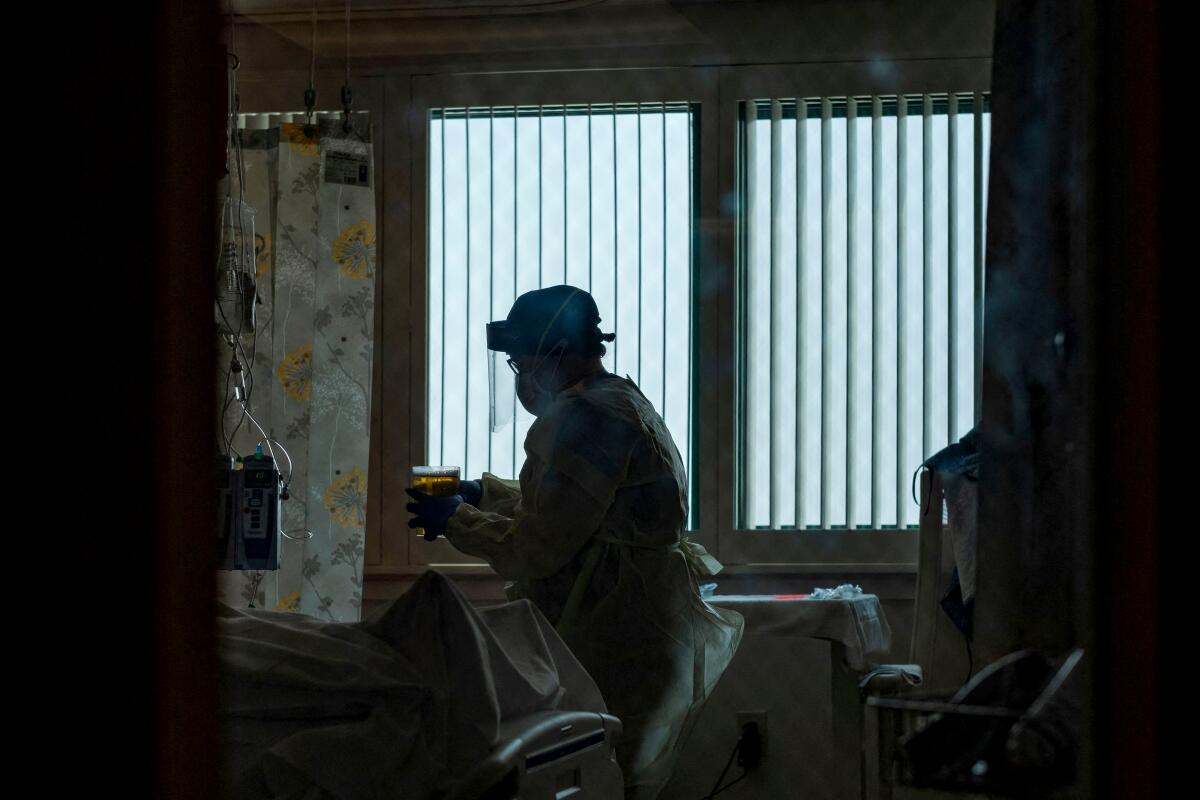
Hospitals, however, remain under stress in parts of California, especially in areas like rural Northern California and the Central Valley. The regions have the state’s worst rates of hospitalization for COVID-19: For every 100,000 residents, the San Joaquin Valley has 37 people in the hospital with COVID-19; in rural Northern California, there are 30; and in the Greater Sacramento area, there are 27, according to The Times’ analysis.
By contrast, Southern California’s rate is 15 and the Bay Area’s is 10.
Some experts say when COVID-19 hospitalizations rise beyond five hospitalizations for every 100,000 residents, it can be prudent to take emergency COVID-19 measures, such as indoor mask orders.
The San Joaquin Valley has reported the least relief in COVID-19 hospitalizations in the last two weeks. COVID-19 hospitalizations fell by only 2% in the San Joaquin Valley, 13% in the Greater Sacramento area and 14% in rural Northern California.
By contrast, those hospitalizations fell by 24% in Southern California and the Bay Area over that same time.
California’s overall pandemic trends appear to be improving, but that course has been upended before.
In the most populous county of the San Joaquin Valley, Fresno County, officials warned last week they were so overwhelmed that hospitals were on the precipice of being forced to ration healthcare to patients.
Home to more than 4 million people — more populous than 24 other states — the San Joaquin Valley has faced an extreme shortage of available staffed intensive care unit beds, so much that some critically ill patients have had to be airlifted more than 100 miles away.
Regional ICU availability in the San Joaquin Valley has been below 10% for 13 consecutive days, and state officials have ordered surge protocols that stipulate general acute-care hospitals must accept transfer patients if directed — provided they have room and that doing so is considered “clinically appropriate.”
In Del Norte County, on the northern edge of California, more than half of hospitalized patients at the main hospital in Crescent City have COVID-19. By contrast, in Los Angeles County, just 11% of hospitalized patients have COVID-19, according to The Times’ COVID-19 hospital tracker.
Nationwide, new daily COVID-19 hospital admissions have fallen. For the seven-day period that ended Saturday, the nation was recording about 11,100 new COVID-19 hospital admissions a day, a reduction of 8% from the previous week, according to the CDC.
Daily COVID-19 deaths continue rising, however. California was reporting about 116 COVID-19 deaths a day for the seven-day period that ended Friday.
That’s up nearly 50% from the week that ended Aug. 27, when California was recording about 79 deaths a day.
The latest daily death tallies are still markedly smaller than during the winter surge, during which most Californians were not fully vaccinated. At its height, California was recording nearly 550 COVID-19 deaths a day.
More to Read
Sign up for Essential California
The most important California stories and recommendations in your inbox every morning.
You may occasionally receive promotional content from the Los Angeles Times.
